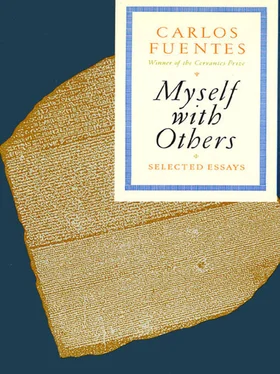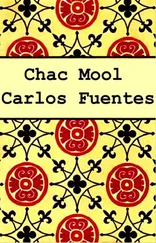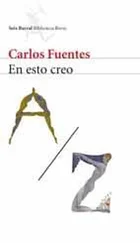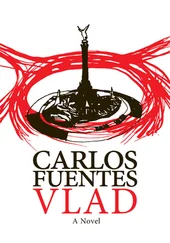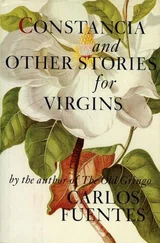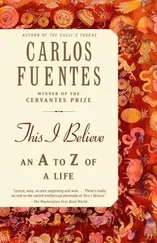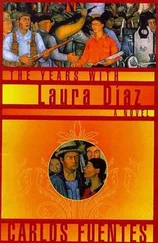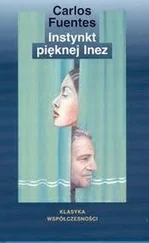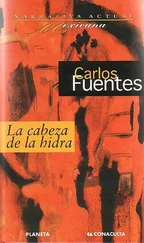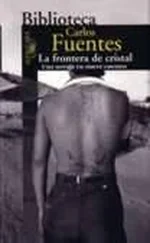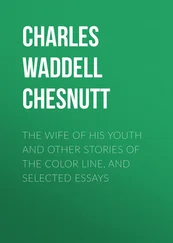The cinema of Luis Buñuel describes a trajectory that abandons the original enclosed space, traverses the open fields of a Castile of the soul, and finally, depending on the nature of the pilgrimage, creates the bonds of a precarious community or simply returns to the sterility of a new and definitive isolation.
The cloister is the origin, the first place. You come out of the unity of the beginning — the childhoods of Archibaldo de la Cruz and Séverine de Cérizy; the convent of Viridiana and the garret of Nazarín, Robinson’s hulk of a motherly English ship and the maternal womb-hut of the children in Los Olvidados (1950): all of them primordial forms of one big earth belly. You come out and follow a road that takes you to another cloister — the prison of Nazarín, the tomb of Heathcliff and Cathy, the abandoned house of Viridiana, the monastery in Él (1953), the besieged church in The Exterminating Angel (1962), the garbage dump in Los Olvidados, the castle of the 120 days of Sodom in L’Age d’Or.
During the pilgrimage, unity is dispersed. Opposites explode. Sense becomes fragmentary. Rupture is the price of experience; it is also the condition for poetry, nurtured by the plurality of sense if it is really to aspire to, and perhaps reattain, the unified vision. The paradox of the poetic is thus that it feeds on this rupture as it aspires to build a new unity drawn from the synthesis of lost originality and concrete experience.
Rich, even prodigious in instants of associative poetry, Buñuel’s filmic dialectics are inseparable, of course, from a certain vision central to Surrealism; the reunion of opposites. In Buñuel, this takes place outside the ego: it is an acknowledgment of the world. But it depends, at the same time, on a personal vision of reality. So the cinema of Buñuel is always faithful to its root conflict: a struggle between two styles of looking, and, through either of them, a conflict between the decision to connect yourself to the world or to refuse that bond.
Now, Buñuel’s cinematographic eye first of all depends on, catches sight of, the specific presence of the most banal objects. Generally, the director uses rather static medium or full shots that tend to collect, with no comment, the disordered proliferation of objects in the world. As leveled and unrelievedly prosaic as the novels of the Marquis de Sade, Buñuel’s immobile camera pictures a life that flows without distinction — although with autonomy.
Then, with a velocity shared by no other film director of his time — and with a sudden tension also reminiscent of Sade’s prose style — the unexpected movement of the camera first equals, then overtakes, and finally surpasses the parallel rhythm of photographed reality. Because neutrality is the norm, the close-up, the traveling, and the cut are more convulsive than usual. And the object, the face, the foot, or the gesture selected by Buñuel from the abundant disorder of the surrounding, immediate world acquires a breathless, at times unbearable heightening of its presence and reveals itself in a connection previously unthought of to the totality of the world. But Buñuel does not stop to celebrate the lyrical moment; he again submerges us in the grayness of normality.
An example. In Él (1953), the action takes place in the conventional milieu of the Catholic bourgeoisie of Mexico City. Everything, fashions, décors, characters, movements, is captured within the unrelieved flatness of melodrama. Francisco, a rich and devout man, fortyish and virginal, marries Gloria, a young woman of his class. Their meeting is one of the great Buñuelian moments. It is Good Thursday in the Cathedral of Mexico City. Francisco is piously performing the ritual of washing and kissing the feet of the poor. Suddenly, the succession of leathery, mud-caked extremities is interrupted by a close-up of a pair of well-shod feet, slim ankles, sheer-stockinged legs, Francisco’s religious passion becomes an erotic passion; both are neatly encompassed in Freud’s notion of fetishism: the objects — in this case, shoes and stockings — obviate the very body they are a part of: Francisco can desire purely because he desires things, and things are both available and secure, whereas bodies have to be wooed and are dangerous.
Gloria, of course, proves to be no object at all but an intelligent woman, and Francisco responds with an orgy of jealousy that only disguises the fact that he is jealous of Gloria’s dangerous mind and body, a mind and body that will not gratify the husband by being only a pair of shoes and stockings. Be that as it may, up until this point the public thinks it is watching a soap opera with Hispanic overtones: a Palmolive tele-tamale. Francisco makes scenes, shadows his wife, and subjects her to mental torture.
But one night while his innocent Desdemona sleeps, Francisco selects, with a chilling sense of taxonomy, the following: rope, cotton, disinfectant, scissors, chloroform, needle and thread, and enters his wife’s bedroom with these defined objects and a no less perfectly defined purpose: to sew up his virgin.
The melodrama then becomes a sort of dark encounter of Othello, the Marquis de Sade, and the illustrious restorer of maidenheads, the Spanish Celestina. The narrative takes a huge physical and qualitative leap: we are witnessing a ritual of possession through cruelty and, if need be, through death. Francisco, more than an Othello, turns out to be a latter-day Don Juan, nurturing a hidden grudge against the women who sent him to hell.
This misogyny is disguised by the deceptive virtues of virginity, honor, and faith. But little by little we realize that Francisco’s marriage is one long vendetta against his wife, whom he would like to degrade, destroy, and condemn, in her turn, to hell. Francisco, too, appears accompanied by an ally, his butler. Both conspire against women as they spend late nights greasing bicycles. The masculine conspiracy against women is an inversion: Francisco and his butler (who plays Leporello to Francisco’s Don Giovanni) behave in the way they imagine women do; they try to penetrate and forestall what they consider to be the irrationality, the wiles and tactics of women. We are both surprised and understanding when the film reaches its splendid finale: Francisco renounces the world and finds refuge in a monastery, the only place where, dressed in skirts, he can recover his communitarian bonds with other men who have transformed into a virtue what in Francisco was a crime: the impossibility of living with women.
In Buñuel, the camera drowns in the banality of everyday life as an act of faith in the marvelous: everyday ants jerkily travel over an everyday hand. The connection transports both elements to a new time and a new space — that is, to a new perception of things:
Milk spills over a woman’s naked thighs.
Blood flows over a pair of black stockings.
A woman’s pubic hair reappears, covering a man’s mouth and chin.
A cow wakes up in the heroine’s bed, portending her imminent rise to matriarchy.
You should caress your lover’s back with pigeons.
Robinson salvages women’s dresses from the shipwreck and wears them in front of a mirror. Does transvestism save him from solitude?
The doors of a Parisian apartment open onto the beaches of Normandy.
Crucifixes hide pointed knives — and novitiates travel with Glass stone bags filled with the tools of their trade: nails, hammers, and crowns of thorns.
A fat Korean client jingles a tiny golden bell and transforms an elegant French bordello into a different place.
And Archibaldo de la Cruz (1955) treasures and caresses bras and panties which he imagines have belonged to the women he wishes to kill. But each of his criminal essays backfires because in every case, the victims die accidentally, commit suicide, or are killed by others before Archibaldo can lay hands on them.
Читать дальше
